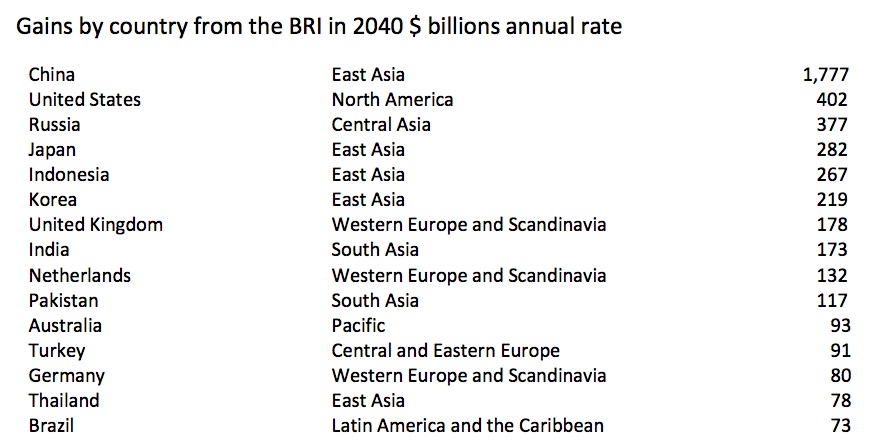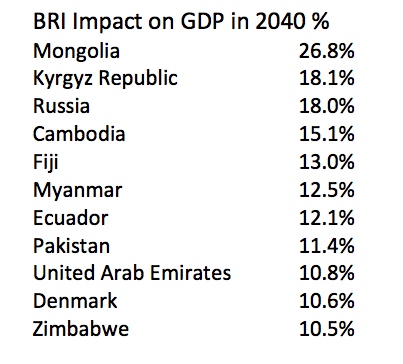China’s Belt and Road Initiative (BRI) is set to boost global gross domestic product (GDP) by more than $7 trillion a year by 2040, and benefit the US most even though it is not directly participating in it, a report has found.
Each of up to 56 countries will see their annual GDP boosted by more than $10bn a year by 2040 thanks to the BRI, which is China’s intensive overseas infrastructure programme intended to facilitate trade between it and the rest of the world.
Roads, railways, airports and sea ports in Europe and central, south and southeast Asia feature in the BRI, which has become China’s all-encompassing diplomatic priority.
The study by global economic consultants Cebr, and sponsored by the Chartered Institute of Building (CIOB), looks at the BRI’s global economic impact on 10 regions of the world and on 25 leading economies.
Other than China, which by 2040 will be the world’s largest economy, the biggest single potential beneficiary of the BRI is likely to be the US, because the sheer size of its economy means it gains from the indirect effects of world GDP growth.
Even though the boost to US GDP is forecast to be only 1.4%, the size of the US economy means it benefits the most in net gains, apart from China.

Source Cebr
The UK is forecast to be among the top 10 beneficiaries of the project, sitting seventh in the table of nations that will see the largest economic impact.
Among the key points in the new report are:
- The BRI is likely to boost world GDP by 2040 by $7.1 trillion a year. This raises world GDP by 4.2% of likely GDP in 2040 (or 8.3% of GDP in 2019).
- As many as 56 different countries are forecast to have their annual GDP in 2040 boosted by more than $10bn as a result of BRI.
- The next largest impact is in Russia, followed by Japan, Indonesia, Korea and the UK.
- GDP is likely to be boosted in Western Europe by 5%.
Another key conclusion of the report is that as the BRI develops, it is likely to attract further countries; it is highly likely that Western Europe, which has largely stayed aloof so far, will join in as the project develops momentum.

Source Cebr
It is even possible that it will result in significant investment, in the longer-term, in upgraded infrastructure for road and rail routes along the east cost of the UK. The BRI includes plans to reach Rotterdam, Europe’s largest port, and enhance links between north-western continental Europe, Scandinavia and the UK.
Chris Soffe, President of the Chartered Institute of Building, said of the report: “This report is a fascinating look at plans to build what is effectively a road halfway round the world, with impact way beyond its boundaries. The Belt and Road initiative is the most significant global infrastructure initiative ever seen. Looking at the potential outcomes for the global economy and the opportunities for our industry – and the future of our industry – is something we should all be interested in.”
Cebr Deputy Chairman Douglas McWilliams said: “This is a transformative economic project that will reshape the world’s geography by linking places that were previously unconnected. It will give a huge boost to the world’s economy not only through creating new infrastructure but more importantly by boosting trade.”
- The study, “From Silk Road to Silicon Road”, can be downloaded from the CIOB.










